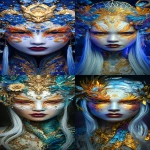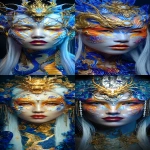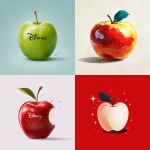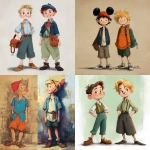Explore the Best AI Image Gallery

AI-Generated Media: A Creative Revolution with Ethical Crossroads
The realm of art and creation is undergoing a seismic shift with the advent of artificial intelligence (AI)-generated media. From captivating images and videos to original music and text, AI algorithms are pushing the boundaries of whats possible, blurring the lines between human and machine creativity. This transformative technology presents exciting opportunities for artists, designers, and businesses alike, but it also raises profound ethical questions that demand careful consideration.
The Creative Canvas: Redefined by AI
AI-powered tools are democratizing creative processes, empowering individuals with limited technical skills to produce high-quality content. Imagine generating stunning visuals for your website without being a graphic designer or composing captivating music for your project without musical training. These tools offer immense potential for self-expression, personalized content creation, and fostering innovation.
Applications Across Industries
- Art and Design: AI algorithms can generate unique artwork, design patterns, and even entire 3D models, pushing the boundaries of artistic expression.
- Advertising and Marketing: AI-powered tools can create personalized ad campaigns, generate engaging video content, and analyze consumer trends for effective marketing strategies.
- Entertainment: From writing movie scripts to composing soundtracks and even creating realistic virtual characters, AI is revolutionizing the entertainment industry.
- Education: AI-powered tools can personalize learning experiences, generate interactive educational content, and provide real-time feedback to students.
Navigating the Ethical Labyrinth
While the potential of AI-generated media is immense, its crucial to address the ethical considerations that accompany this powerful technology.
1. Authenticity and Originality:
When AI creates content indistinguishable from human-made work, questions arise about authenticity and ownership. How do we distinguish between human creativity and AI-generated output? Establishing clear guidelines and standards for attribution is essential.
2. Bias and Discrimination:
AI algorithms are trained on vast datasets, which can inadvertently reflect societal biases. This can result in AI-generated content that perpetuates stereotypes or discriminates against certain groups. Its crucial to develop techniques to identify and mitigate bias in training data.
3. Job displacement:
AI-powered tools have the potential to automate creative tasks currently performed by humans, raising concerns about job losses in the creative industry. Its important to consider the societal impact of AI and explore strategies for workforce retraining and adaptation.
4. Misinformation and Manipulation:
The ability to generate realistic fake content poses a significant threat to truth and trust. Deepfakes, AI-generated videos that convincingly depict individuals saying or doing things they never did, can be used for malicious purposes, such as spreading misinformation or damaging reputations.
Shaping the Future: Responsible Development and Regulation
As AI-generated media continues to evolve, its imperative to establish ethical frameworks, regulations, and best practices to guide its development and use.
1. Transparency and Explainability:
Developing AI systems that are transparent and explainable is crucial for building trust and accountability. Understanding how AI algorithms arrive at their outputs can help identify potential biases and ensure responsible decision-making.
2. Human Oversight and Collaboration:
While AI can automate many creative tasks, human oversight remains essential. Designers, artists, and creators should collaborate with AI tools to enhance their workflows and bring a unique human touch to the final output.
3. Education and Awareness:
Educating the public about the capabilities and limitations of AI-generated media is crucial for fostering informed discussions and responsible consumption.
4. International Collaboration:
Addressing the ethical challenges of AI requires global cooperation. Establishing international standards and guidelines can help ensure that AI development and deployment are aligned with shared values.
Conclusion
AI-generated media presents both exciting opportunities and profound ethical challenges. By embracing a responsible and ethical approach to its development and use, we can harness the transformative power of AI while safeguarding the integrity of creativity and protecting human values.
](https://images.ai-img.art/thumbnails/150/269414b0e541026702e9e67c67602c96162f37ff460a388b3b36314c8fc936dd.webp)


















](https://images.ai-img.art/thumbnails/150/2fbd98ecfc425cfc1597779121e1c0305437067779e9c471eb64ff9615d5be98.webp)


](https://images.ai-img.art/thumbnails/150/8d1fe5a7a49cfc96747182431a853357913286d89258383caab2d3b4681afcb5.webp)








](https://images.ai-img.art/thumbnails/150/485c8b1c747827bdc9a962f8a1919b3c259b18dd263b260208a1eae19fb85e07.webp)







](https://images.ai-img.art/thumbnails/150/5197af8969d850e2a43e141d41e482ccbceedebceb2a4caf9f098f943f9d1b0f.webp)







](https://images.ai-img.art/thumbnails/150/3020b8c2b6d9be07e042357107af1de10deb274a41d2b0f332684ad4b532a702.webp)

